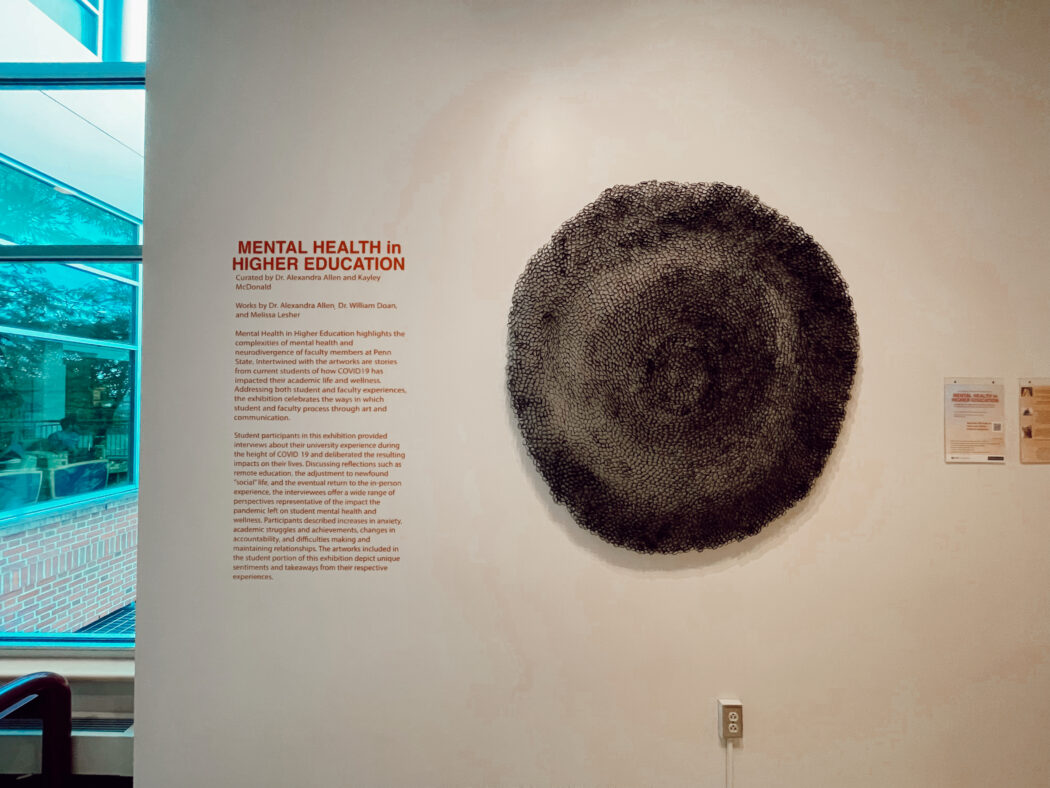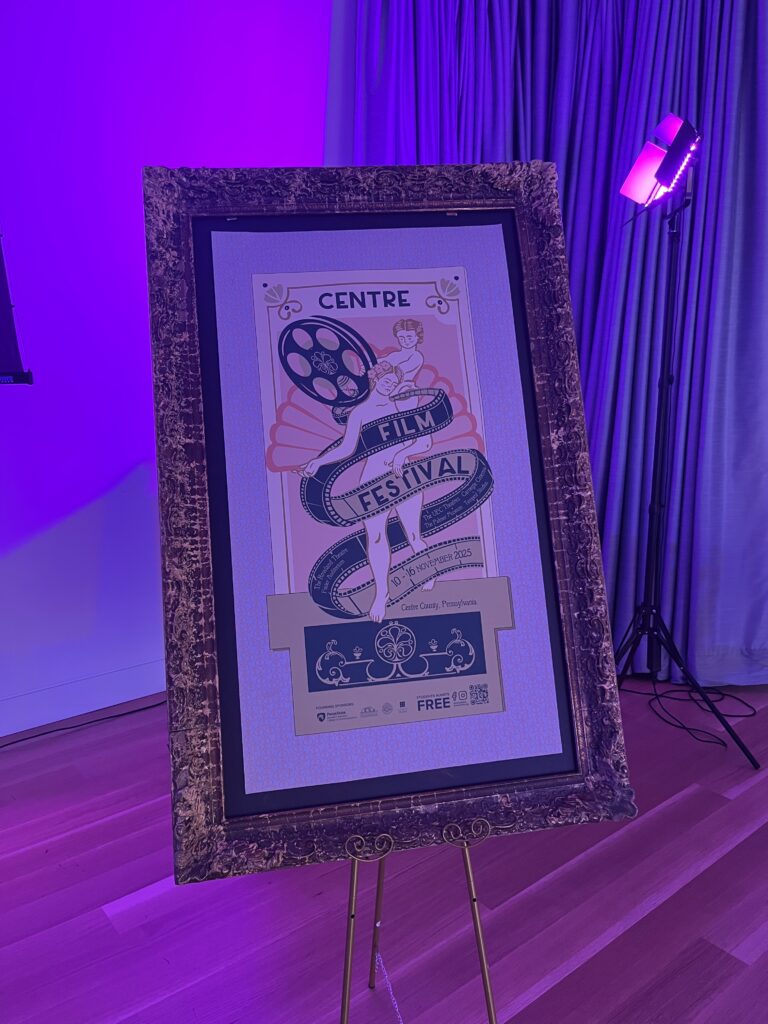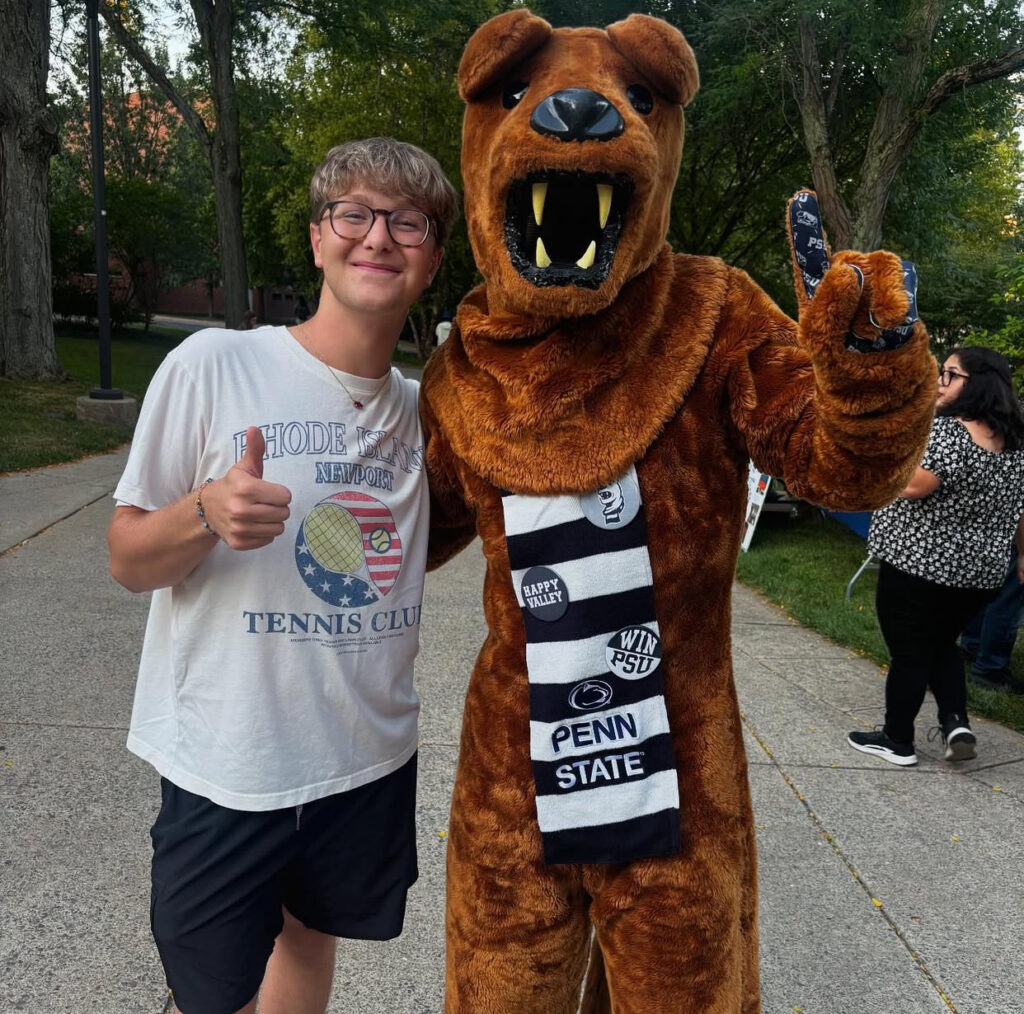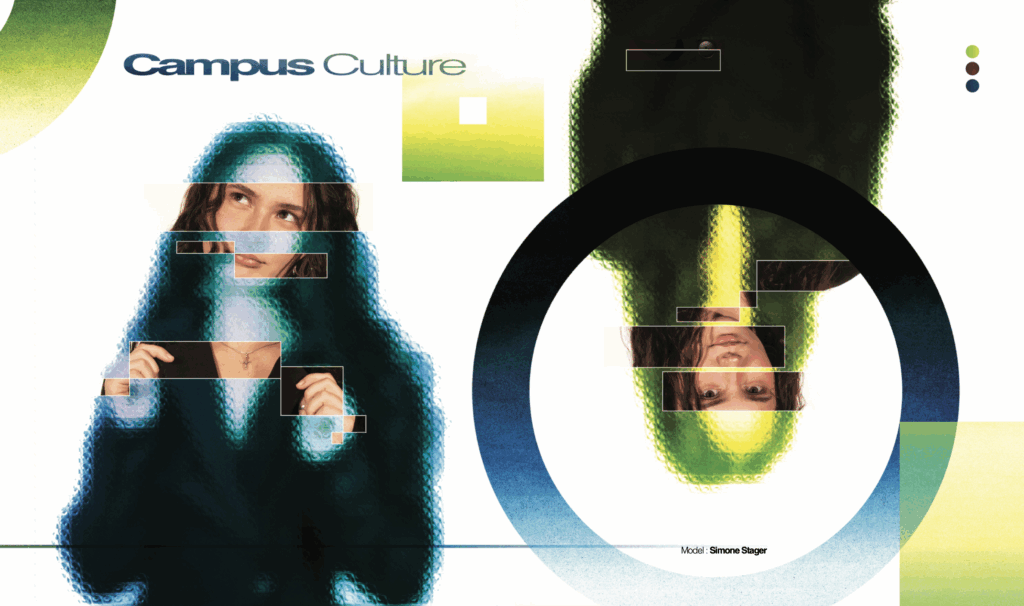Knocking down a stigma begins with having open conversations. Now more than ever, the modern world is experiencing a collective movement towards acceptance. Mental health and neurodivergence are often overlooked by social institutions as they are variable and intangible. Today’s students and faculty alike have lived through momentous periods of social change brought about by school shootings, a pandemic, foreign conflict and natural disaster.
Curated by Dr. Alexandra Allen and Kayley McDonald, “Mental Health in Higher Education” is an exhibit available at the HUB-Robeson Center until Oct. 23, containing the works of Dr. Allen, Dr. William Doan, and Melissa Lesher.
Mental Health in Higher Education highlights the complexities of neurodivergence and mental health among faculty members at Penn State. At the exhibit, there are artworks completed across different mediums displayed and accompanied by students’ interviews that intertwine their experiences with that of the faculty members. The stories reflect on the impact that COVID-19 has had on both academic and social life, celebrating resilience through art.
“When I first began brainstorming ideas for the exhibit, I knew I wanted to focus on mental health and neurodivergence in some capacity,” says McDonald. “After the recent years we’ve all been through with COVID and other strenuous life circumstances, I felt it would be wrong to focus on or examine anything other than mental health, especially in the education space,” she says.
McDonald was given the opportunity to curate an exhibit for her final project through the Exhibitions Internship offered by the university. As a first-time curator, she reflects on the theme of the exhibit and how it showcases “an experience that is more widely shared than one might assume.”

Being displayed in such a high-traffic area, the art becomes a part of the daily student experience both actively and passively, according to Exhibition Coordinator Sarah Kipp.
“I feel that the unique experiences that folks bring to the works of art can truly enrich the impact of the work itself,” says Kipp. “The works can act as a catalyst for critical conversations to occur, and sometimes works of art even cause folks to think about something in an entirely new way,” she adds.
The HUB-Robeson Center regularly displays artwork in free exhibition cases that share unique perspectives on experiences that we may not always think of as shared. In passing, students hear stories about the student and faculty bodies at Penn State.
In an interview with Dr. William Doan, Doan says he drew inspiration for his medieval pandemic masks from his interest and research in mental health and the brain, particularly anxiety and depression.
“I think that art can be a powerful tool for creating dialogue and empathy around mental health,” says Doan. “The more dialogue the better.”
“I have seen the arts impact folks in a variety of positive ways from offering an escape to something peaceful and beautiful, to learning about and being involved with critical social issues,” says Kipp.
Have you checked out the Mental Health in Higher Education Exhibit? DM us a pic @VALLEYmag!





